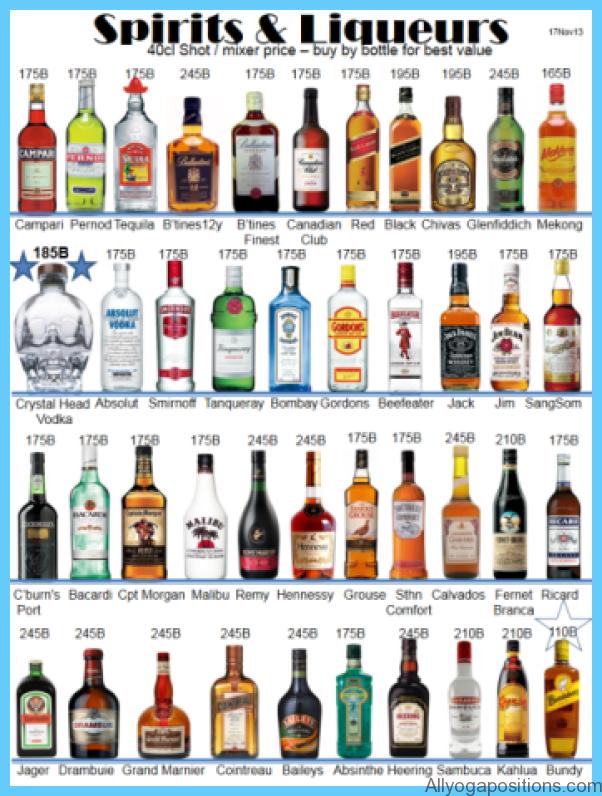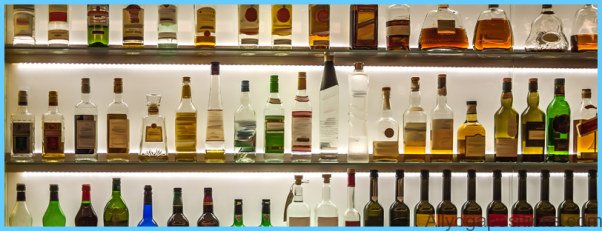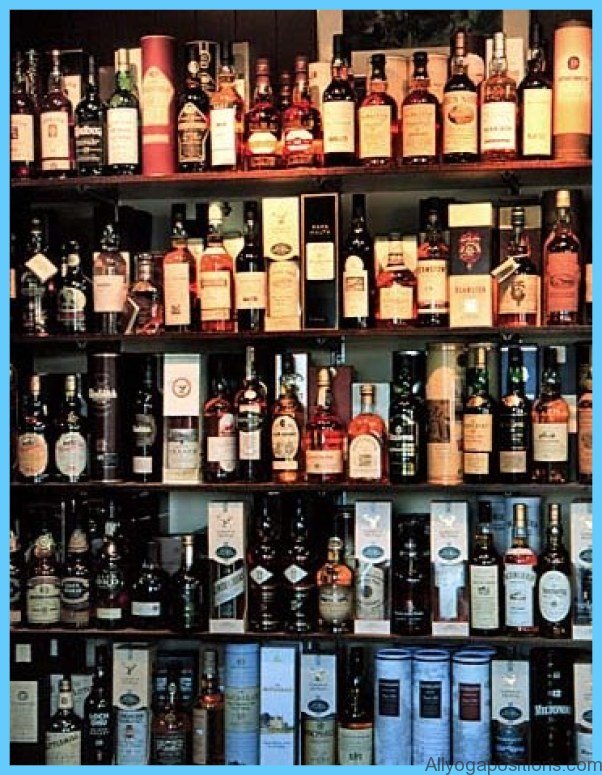A large number of different spirits and liqueurs are used as flavourings in cooking, some commonly, others locally or as the particular secret of some chef. Although they have been made exceedingly expensive by taxation in many countries, usually only small quantities are required and miniature bottles make it possible for the cook to keep a large selection on the kitchen shelf, provided he can resist the temptation to drink them
The contents of these bottles will have one thing in common: they are all strongly alcoholic and, unlike wines or even fortified wines, can be ignited if heated. This makes possible the spectacular operation of flaming, carried out in many restaurants as a far from gratuitous firework display.
The real purpose of flaming is to burn off small quantities of fat which have mixed with the alcohol and make certain other changes in the flavour of the dish which are more easily experienced than described.
Brandy is without doubt the most important spirit used in cooking. It is distilled from wine and varies greatly in quality and flavour depending on where it comes from, what type of grapes are used, how it is distilled, its age and so on. The best from France are cognac and armagnac. As brandy is above all a French spirit, and as it is used particularly in French cooking, it is obviously not going to be right to use, in a dish of French origin, a cheap colonial brandy which has often been made from muscat grapes and has retained their characteristic flavour. A certain amount of common sense is necessary in the choice. Even if one cannot afford a fine brandy, the so-called ‘cooking brandy’ is also best avoided.
Spirits and Liqueurs Photo Gallery
Brandy is used as a traditional part of the flavouring in a large number of fish, shellfish, meat and
Fowl dishes originating particularly in France and Spain. Where used in other parts of the world, the dishes are most usually of French origin. One could find it in almost any type of dish: in savoury spreads such as tapenade; pates of liver, duck and game; in fish and shellfish soups (e.g. zarzuela, bisque); meat dishes (tranches de mouton a lapoitevine, daube de veau, estofade de boeuf, estofade de veau); chicken (coq au vin); with game (pheasant, woodcock, etc.) as well as in a host of sweet dishes, often mixed with liqueurs.
Marc is another grape spirit, but is made from the fermented residues after the grapes have been pressed for wine. This is used as a flavouring in many regional dishes, especially in wine-producing areas. In these dishes, it sometimes replaces brandy.
Other fruit brandies or eaux-de-vie are made by distilling fermented mashes of other fruits. The flavour of these is very unlike the taste of the fruits from which the spirit is made. These have great local importance in cooking and are used in regional dishes.
Calvados, a spirit distilled from cider and equivalent to the American applejack, is made particularly in Normandy and will occur in a number of Norman recipes often flamed, and particularly with chicken, tripe and apples. It gives a very characteristic flavour but where calvados is not available whisky has been recommended as the best substitute.
Quetsch and mirabelle, distilled from two different kinds of plums, are used in certain regional dishes from north-eastern France, where these spirits are made. Other fruit brandies from the same region, such as framboise made from raspberries, are also sometimes used.
Kirsch, made from black cherries, is produced in the whole region of the Vosges, Black Forest and neighbouring Switzerland. This is one of the most important spirits used as a flavouring in sweet dishes, with fruit (particularly with pineapple, bananas and in fruit salads) and with chestnuts, in creams and confectionery; but it is also used with cheese (fondue) and in some meat and chicken dishes. Kirsch is dry, not sweet, and has a totally different flavour from the other cherry-based spirits such as maraschino.
Whisky, distilled from grain, is not traditionally a common flavouring in cooking (the Scots prefer to drink it), but can produce some interesting results and has recently become popular with many chefs on the Continent in such dishes as fagiano al whisky (Italy) and steak in whisky (Spain). Gin is sometimes used in England for flavouring a sweet sauce, and vodka can be used for flaming.
Rum, distilled from fermented sugar cane juice or molasses is a very important flavouring in cooking. Rums vary greatly in flavour from the very pale rums, of which the best known is Bacardi, to the dark strongly-flavoured rums such as those from Jamaica. Some are dry; others sweet. In savoury dishes rum is unusual, though found in some local recipes of Creole or Caribbean origin and also in Spain (langostinos al ron), but in cakes and sweet dishes it is a very well-known flavouring. The selection of the right rum is important, and it is certainly not sufficient for the cook to take any rum which comes to hand or to use rum flavour substitutes. It is worth becoming conscious of their variety.
All of the items dealt with so far, with the exception of gin, have their flavours derived from congenerics formed during fermentation and usually distilled from the alcohol or from other substances formed by chemical reaction during the ageing in the wood. In theory, at least, no other flavourings are added. In practice, at least so far as the cheaper brands are concerned, this is not
Always true, but it is the ideal. Gin is a frank exception, as it is always flavoured, usually with juniper and other aromatics.
There are, however, a host of liqueurs and other alcoholic drinks which depend on alcohol suitably flavoured and sugared. The alcohol may be derived from fermented grapes, grain, potatoes, or any other starchy or sugary substance, even from sawdust. The alcohol is highly purified and has very little taste of its own, save the slightly sweet burning taste of ethyl alcohol.
But alcohol and water together will dissolve many of the essential oils and ethers if fruits, aromatic seeds and herbs or spices are macerated in the liquid. Sometimes, these are again distilled, but otherwise they are just filtered and cleared to form a simple ratafia (q.v.). Colouring may be added and they are often sweetened with a sugar syrup. Most often, the exact formula is a trade secret. The main characteristic of these is that the flavour bears some resemblance to the materials from which the liqueur is made. For instance, the uninitiated might guess from tasting that cherry brandy was flavoured with cherries, but would scarcely guess that kirsch was distilled from them
Maraschino, a very sweet liqueur made originally from the marasca cherry on the Adriatic coast of former Yugoslavia, has a unique flavour, very scented and quite unlike kirsch. A common flavouring in creams and sweet dishes and with fruit, it is quite clear and different in flavour from the dark red cherry brandies made particularly in England, Holland and Denmark. These have a more obvious cherry taste (with a dash of bitter almond from the stones and are less often used as flavourings).
Orange-flavoured liqueurs are also important in cooking for flavouring both dishes and the orange-flavoured sauces to go with duck, etc. There are many of these orange-based liqueurs, varying considerably in flavour and sweetness, but all recognizably tasting of orange. While writing this blog, I went through the interesting but rather sickly exercise of tasting a large number alongside each other, but the differences defy description. The most famous of these liqueurs are Cointreau and Grand Marnier as well as the various curagaos named after the oranges from the Dutch island of that name off the coast of Venezuela, but now coming from many other places. But one may also note the Italian Aurum (gold), many liqueurs labelled ‘Triple Sec ’, a list of orange-flavoured liqueurs from Spain and, farther afield, Unicum from Hungary and Van der Hum from South Africa. They come in all colours from white (clear) to orange and even purple. Most of us will settle for Grand Marnier or Cointreau, but one may base the fame of one’s cooking on something less obvious.
Apricot-flavoured liqueurs are probably next in importance to the orange liqueurs as flavourings. These, as far as I know, are used only in sweet dishes, though apricots as fruits are used in savoury dishes. There are many of these: Capricot, Apricot brandy, Abricota, Abricotine, and Apry. The famous Barack of Hungary is another apricot brandy but with no taste of apricots and, though one of my favourite spirits, is not as far as I know usually used as a flavouring.
There are also many other fruit-flavoured liqueurs, flavoured with every imaginable fruit, to choose from Most of these will be used for sweet dishes only, if at all. required. There are also many aperitifs and other less known alcoholic drinks such as pineau des charentes, which are used in special dishes.
Besides liqueurs which have an identifiable taste and are therefore fairly easy to place, there are also many liqueurs, flavoured with complicated mixtures of herbs and spices, which may be called for in particular dishes or with which one may experiment. The formula for most of these is secret. One may mention a few obvious ones, such as Benedictine, Chartreuse, Raspail, Goldwasser, Tia Maria, Izara and Trapistine. Sometimes one will come on such ingredients in recipes, although their use as flavourings is rather the exception than the rule.




















